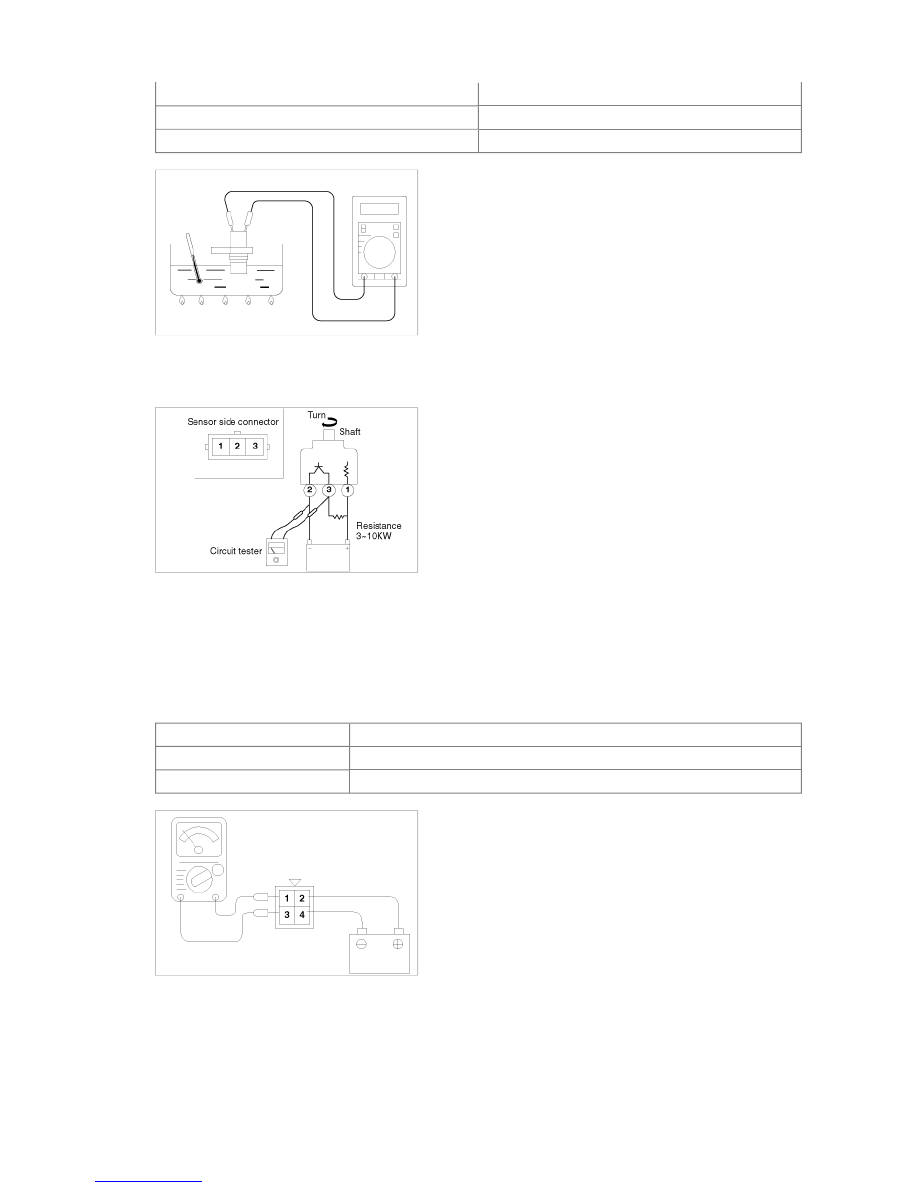Hyundai Tiburon (2003 year). Manual - part 108

Oil temperature (°C)
Resistance (K
Ω
)
0
16.7 ~ 20.5
100
0.57 ~ 0.69
3. VEHICLE SPEED SENSOR CHECK
(1) Remove the vehicle speed sensor and connect a 3~10 K
Ω
resistance as shown in the illustration.
(2) Turn the shaft of the vehicle speed sensor and check that there is voltage between terminals 2-3 (1 turn=4 pulses).
4. A/T CONTROL RELAY CHECK
(1) Remove the A/T control relay.
(2) Use jumper wires to connect A/T control relay terminal 2 to the battery (+) terminal and terminal 4 to the battery (-)
terminal.
(3) Check the continuity between terminal 1 and terminal 3 of the A/T control relay when the jumper wires are
connected and disconnected from the battery.
(4) If there is a problem, replace the A/T control relay.
Jumper wire
Continuity between terminal No.1
Connected
Continuity
Disconnected
No continuity
5. SOLENOID VALVE CHECK
(1) Remove the valve body cover.
(2) Disconnect the connectors of each solenoid valve.